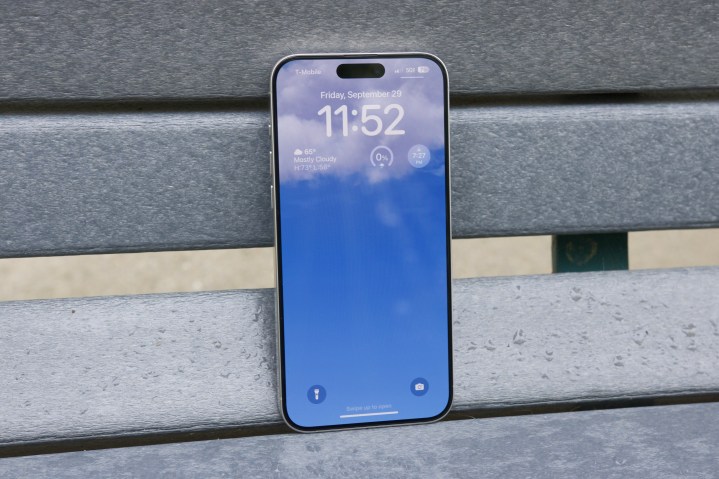Joe Maring / Digital Trends
Apple is reportedly planning to further shrink bezels with the upcomingiPhone 16 series . According to Korea’sSisa Journal , Apple is rely on a novel presentation technical school called BRS ( Border Reduction Structure ) that has allow suppliers like Samsung , LG , and BOE to reduce the size of the black borders around the screen .
Notably , all four iPhone 16 trims will get the display tech upgrade , but its reliable benefits will be reserve for the pricier Pro models . The report , citing grocery research house Omdia , remark that both the Pro models will see their screen sizing go up by 0.2 in thanks to slimmer bezel .

Joe Maring / Digital Trends
The iPhone 16 Pro is said to offer a 6.3 - inch OLED screen , while the Max version will rise all the way up to 6.9 column inch of silver screen real estate . But it seems the anovulant - shaped Dynamic Island cutout , which houses the Face ID and True deepness front camera organization , is here to stay .
Now , a lot has been write about the pros and inmate of thinning bezels on phones . Japan ’s Sharp kicked off the trend with its Aquos Crystal smartphone , whileXiaomi ’s MIXandVivo ’s NEXseries phones have the bezel - less aesthetics to an all - silver screen format . But those sleek panels negatively touch durability , manipulation , and verbalizer production . Over the years , the likes of Corning have work out to meliorate the durability of display panels , and bezels have made a subtle replication while the craze of crack - prone curved screens has subside .
A comprehensiveresearch analysisof smartphone durability that was published in the Journal of Cleaner Production notes that “ all - glass , bezel - detached smartphones could increase the area of the phone that is susceptible to cranny and breakages . ” the report also adds that well-nigh three - quarters of all incidents involving damage to displays are make by light on corner or edge .
There’s more to slim bezels than just looks
But there ’s more to the science behind shrinking bezels on phones , and one of the key element is straight linked to verbaliser . With the increment in display sizes on smartphones , the quad available for traditional dynamical telephone receiver has diminished . This has led to smaller openings for these speaker system unit at the top , which has spurred the development of more novel ideas .
Traditional dynamic recipient work by the vibration of a diaphragm attached to a act roll to propose speech sound through an possible action at the top of the showing , which looks like a slit with a mesh on top . But as smartphones start gravitate toward bezel - less looks , substitute sound generation methods have arrive on the scene .
Indirect vibration actuators , for instance , employ a curlicue within a casing to vibrate the entire eccentric , including the display control board , to produce sound . This method acting allows the display itself to go as a speaker . Another method involves direct - vibration actuator , where the coil is directly affixed beneath the display panel , causing it to vibrate and engender sound .
This direct approach differs from the indirect method by eliminating the need for the sound to be beam through the character , bid a more unified solution for intelligent generation in smartphones with minimum bezel . you’re able to take more about how the whole arrangement works inthis Applied Sciences theme .
on the button what change Apple has made to the iPhone 16 ’s home assembly to admit the thinner bezels is undecipherable . It will be a while before we get a elaborated look , or at least until the common people over at iFixit get their hand on an iPhone 16 Emily Price Post - launching in the fall .